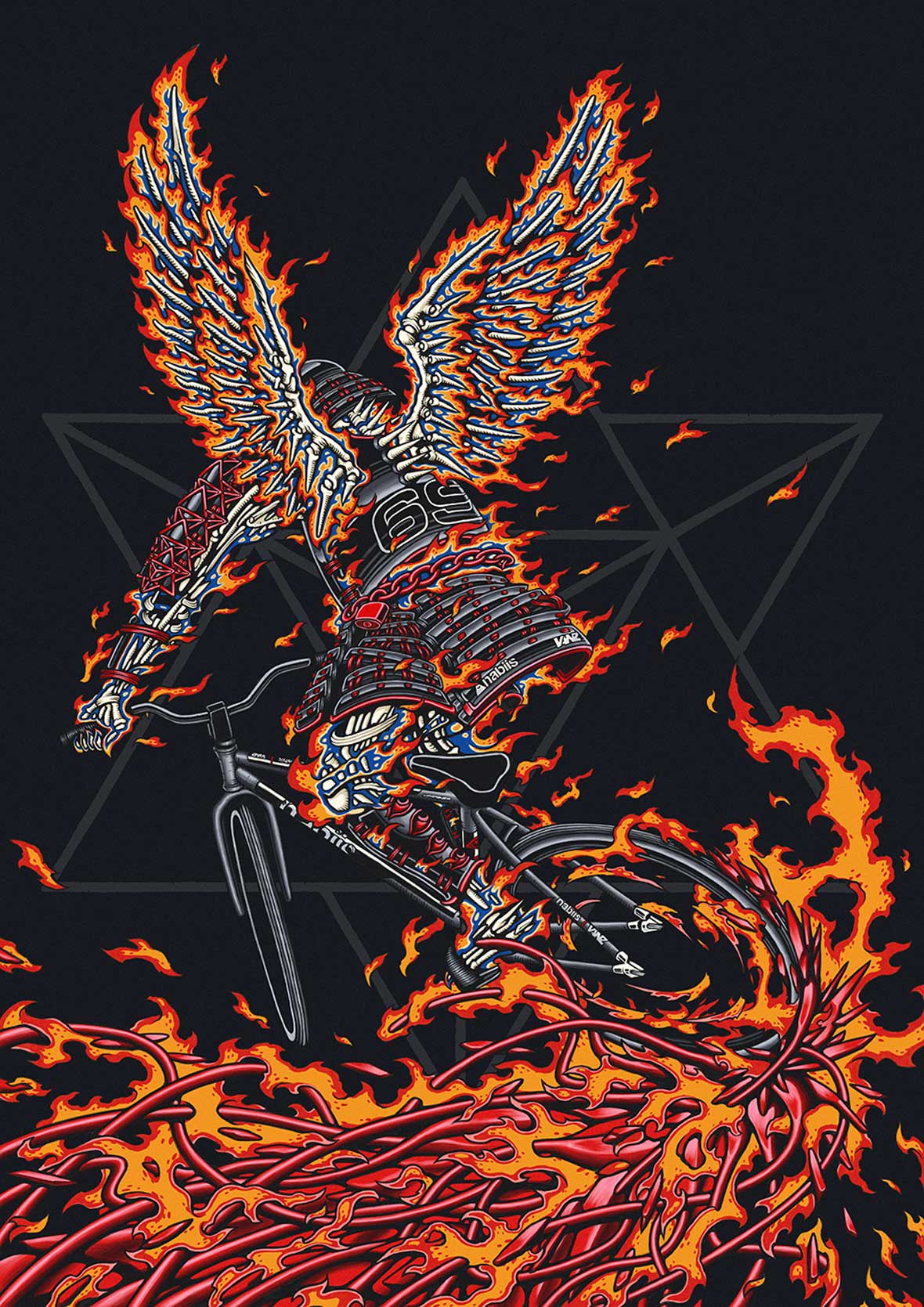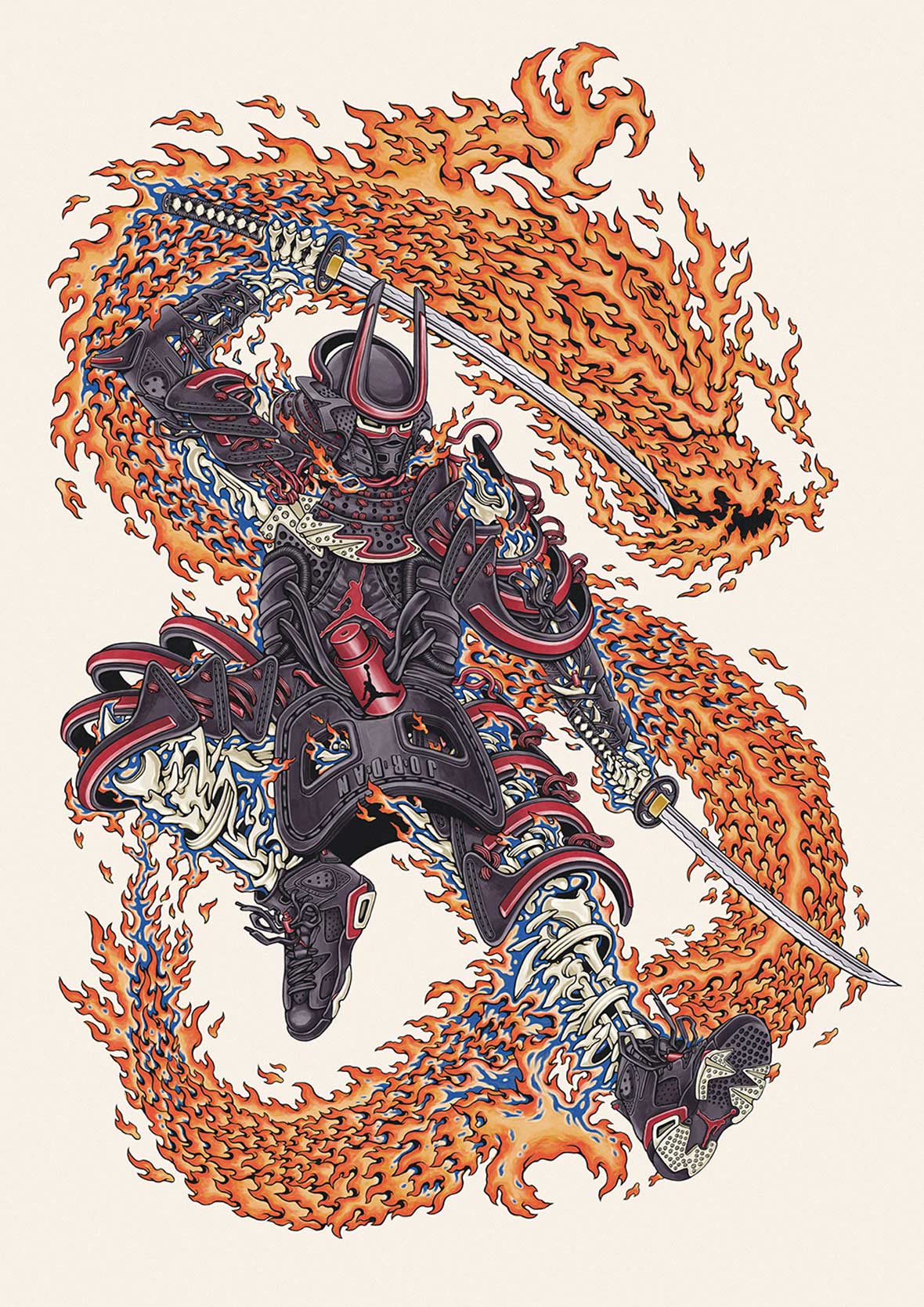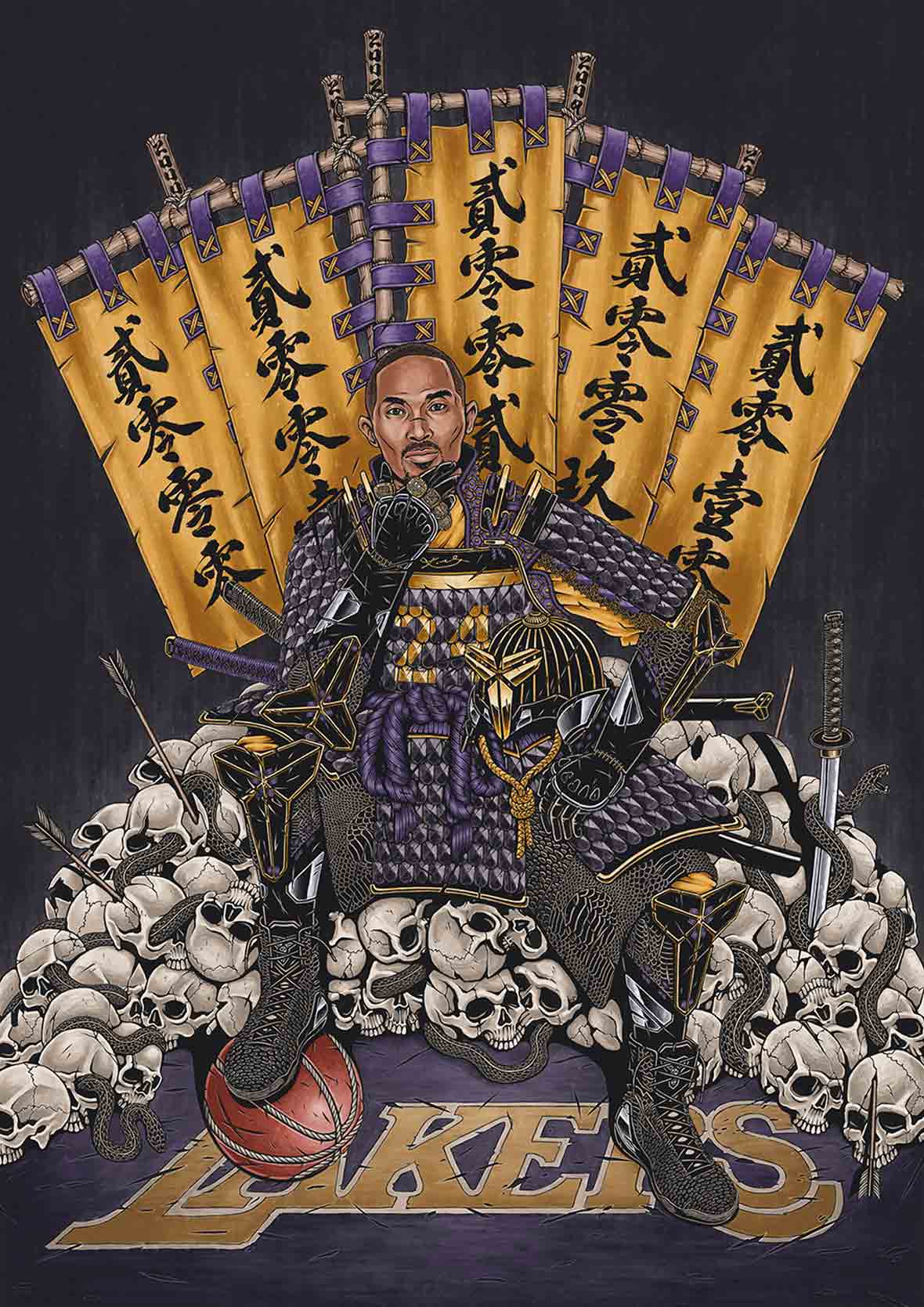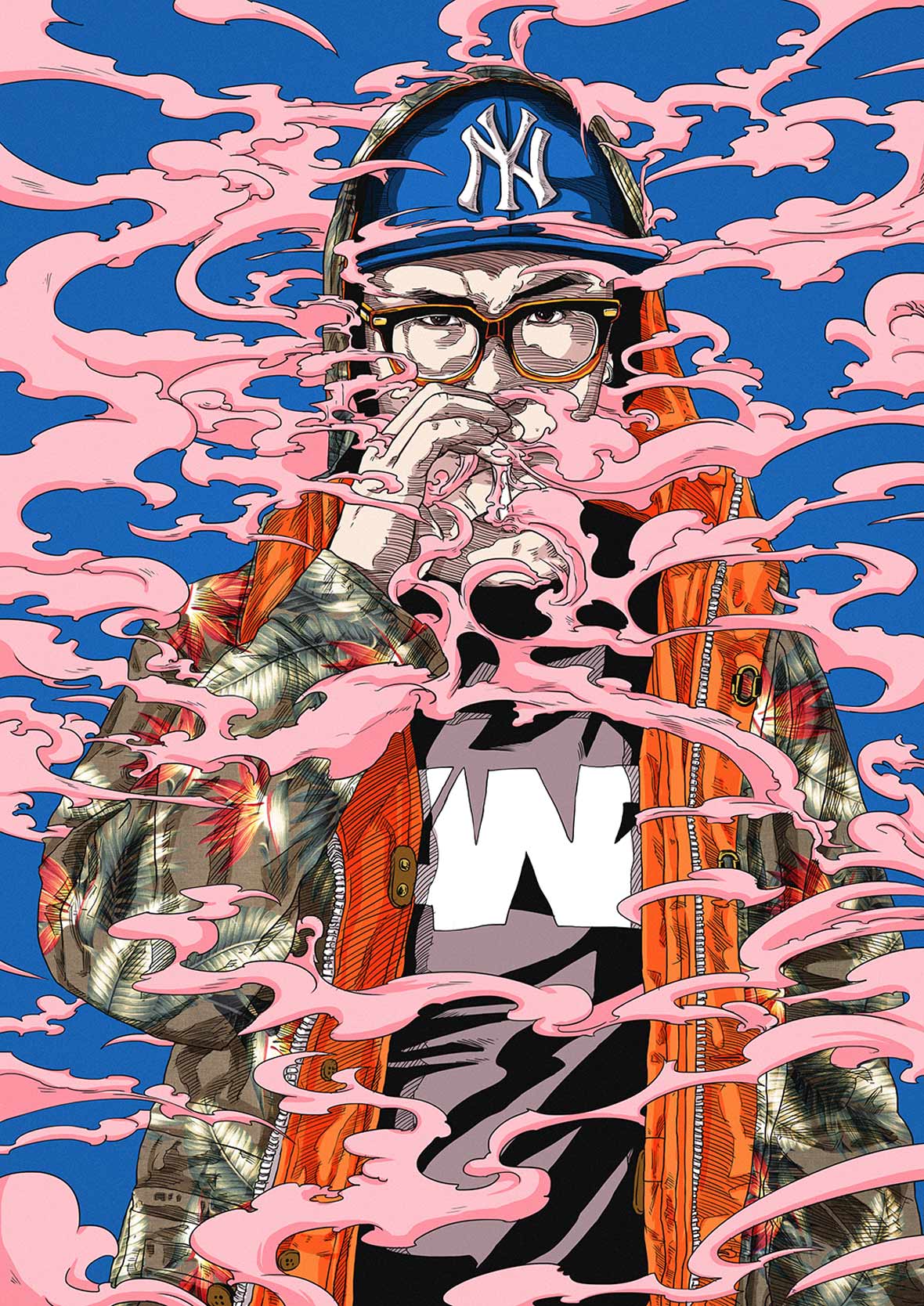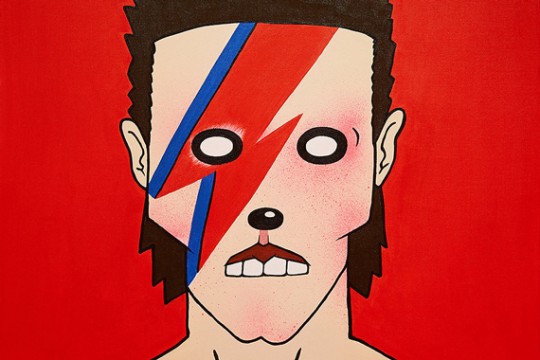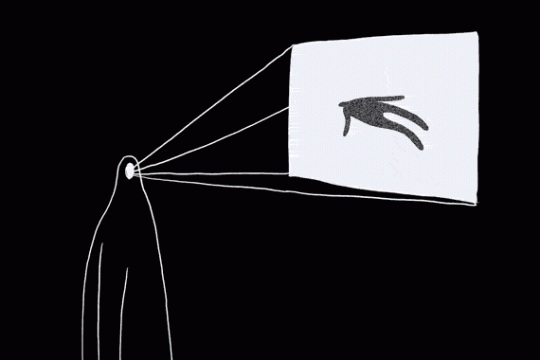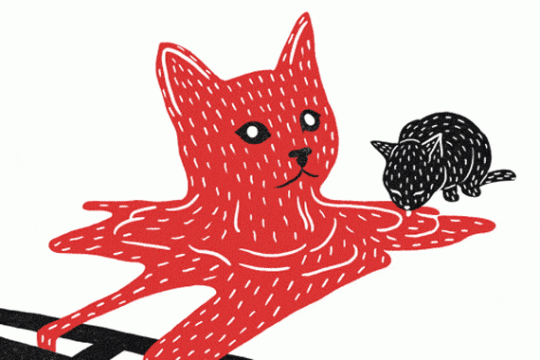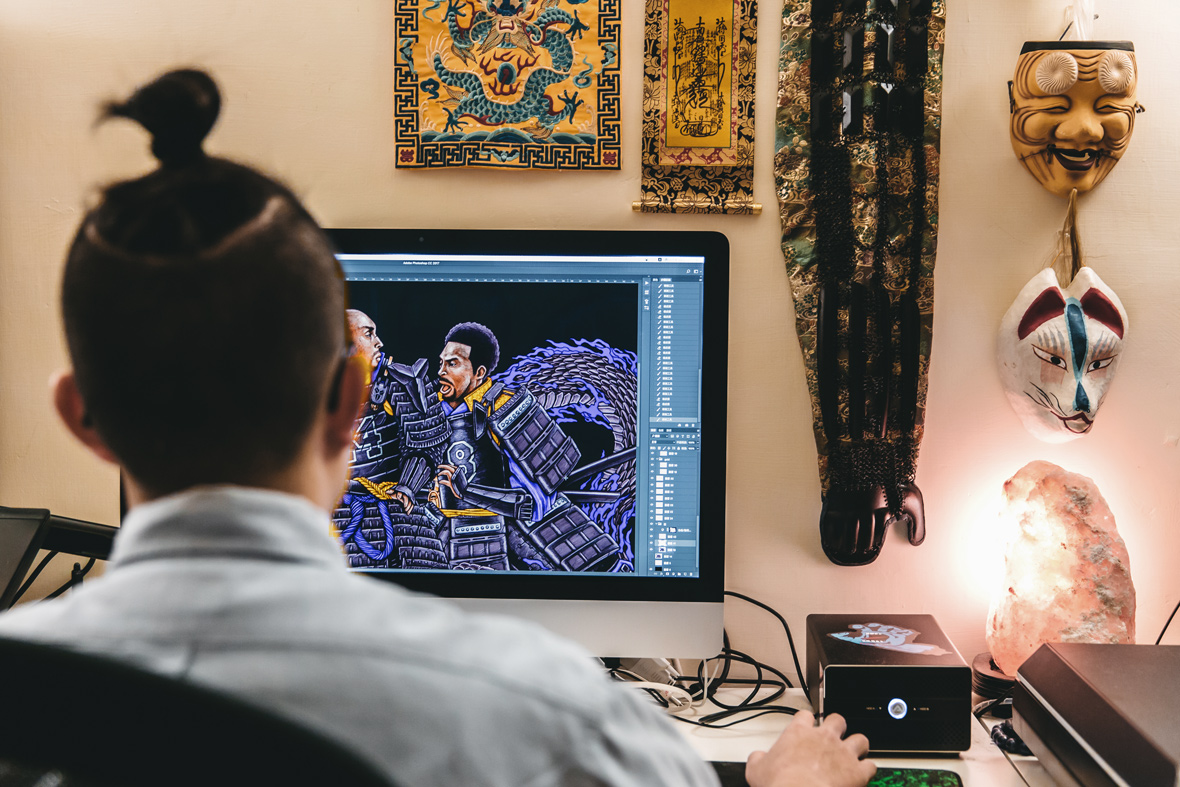
From a samurai-fied Kobe Bryant to a skeleton warrior rocking Jordans, Vanz Chiang’s illustrations seamlessly combines elements of Japanese culture with modern-day NBA superstars. The Taiwanese artist’s fearlessness to mash together unlikely elements from different cultures has led to collaborations with local Taiwanese streetwear goliath Remix Taipei, renowned streetwear brand Mishka NYC, and American sportswear brand Champion.
从穿着武士装的科比,到穿着乔丹球鞋的骷髅头战士,台湾艺术家江振嘉(Vanz Chiang)将日本传统文化和NBA球星做结合,创作出一系列出色的插图作品。正是这种大胆文化碰撞的风格,促成了他与台湾本地著名街头时尚品牌Remix Taipei、著名服饰品牌Mishka NYC和美国运动服装品牌Champion的合作。
Being someone who’s never bought into the rigorous structure of traditional academic curriculums, Chiang would often absent-mindedly doodle away during class and daydream about being a manga artist. “I’ve never had a concrete plan for the future,” he says with a nonchalant shrug. “My line of thinking was simple: I just wanted to do the things I loved. I’ve been lucky enough to have been able to find a career in something I’m interested in even before I even finished college.”
因为不喜欢学校严格的课堂气氛,江振嘉上课时总是心不在焉地涂鸦,或是发白日梦,幻想着成为一名漫画艺术家。”我对未来从来没有具体计划。”他耸了耸肩说,”我的想法很简单,只想做自己喜欢的事情。我很幸运,在大学毕业前就找到了自己的事业,还是自己感兴趣的事情。“
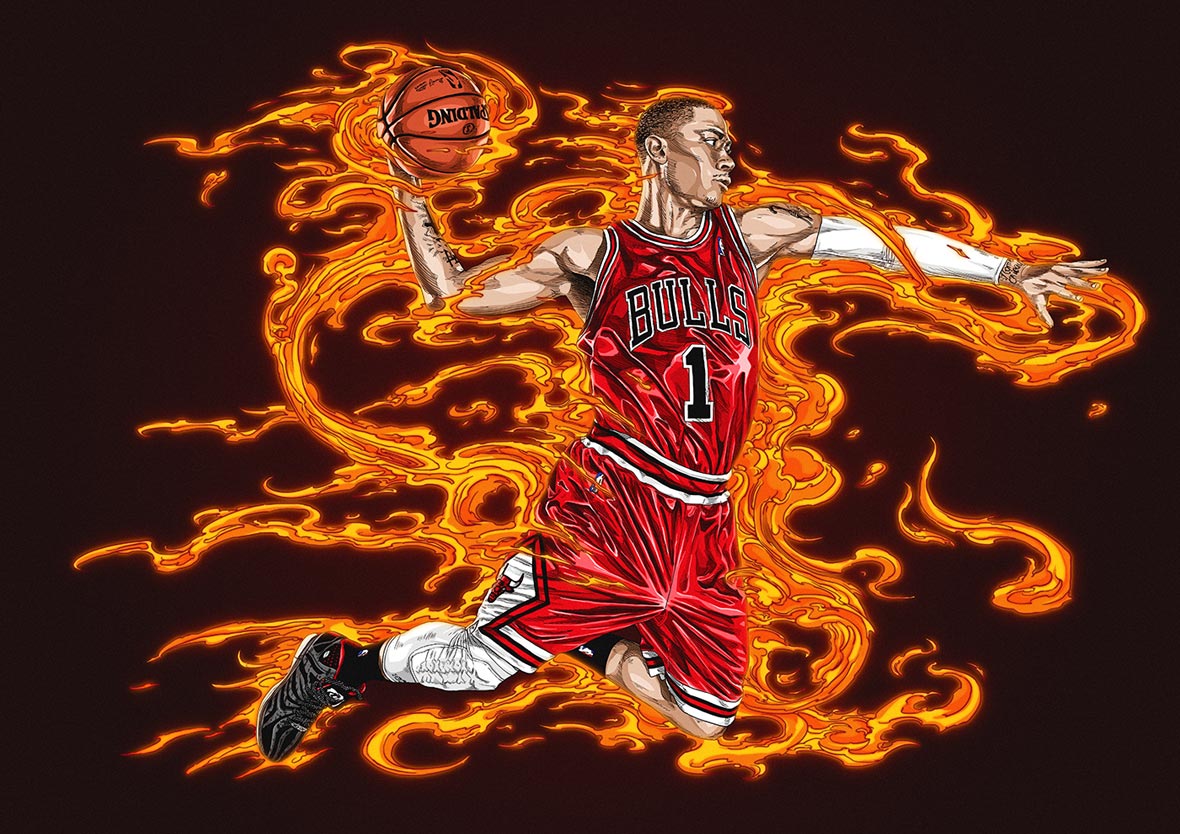
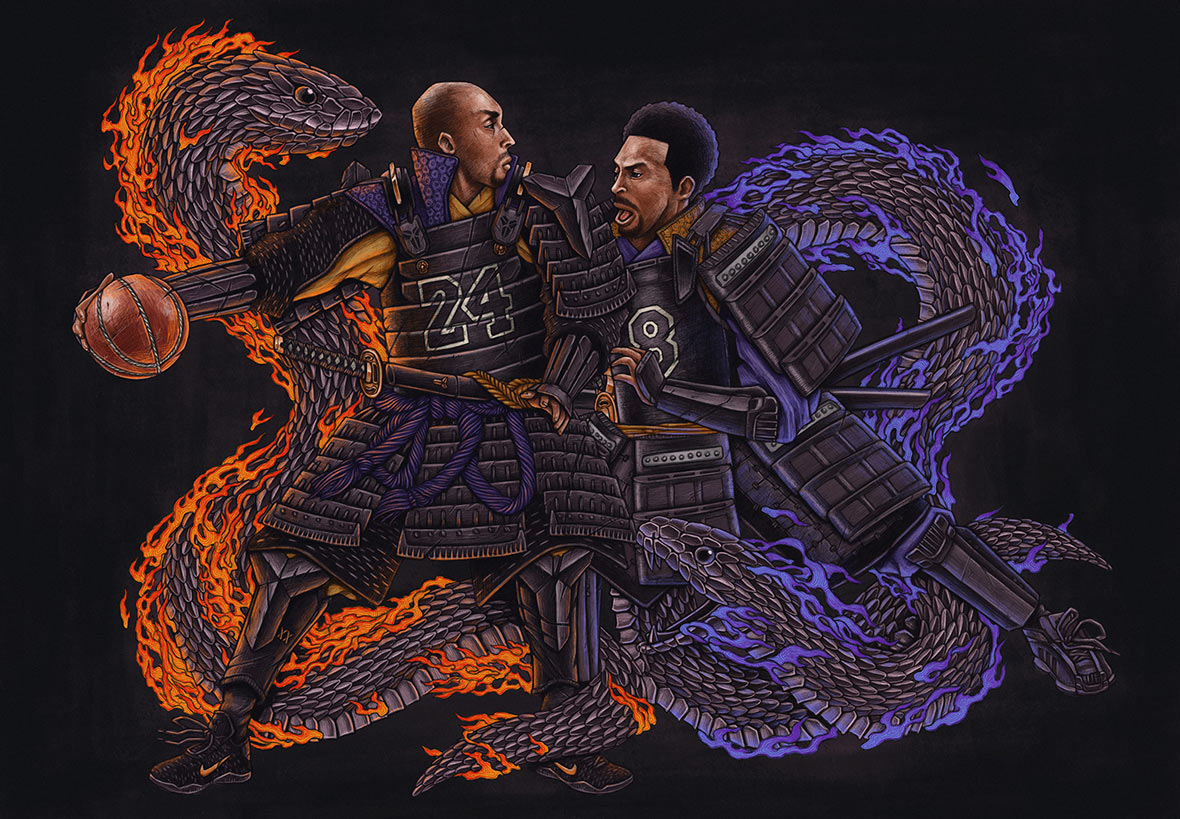
Chiang’s collection of books offers a revealing glimpse into his varied interests and creative inspirations. Inside his Banqiao studio space, his bookshelf is filled to the brim, from literature about skate culture like Thrasher Skate and Destroy: The First 25 Years of Thrasher Magazine and the Supreme monograph to art books like James Jean’s Xenograph and The Skateboard Art of Jim Phillips. But by far, the art books that dominate his shelves are those by Japanese artists. Chiang credits the famous Japanese manga artist Takehiko Inoue as being one of his biggest influences. Inoue is best known for the wildly popular Slam Dunk, a sports-themed manga series about a high school basketball team, and Vagabond, a manga series about a wandering swordsman. The influence from these two series is immediately obvious in many of Chiang’s works. Aside from the illustrative styles, the narratives presented in the manga are equally important to Chiang’s creative processs. “The manga series I enjoy reading are usually ones that explore human nature and the meaning of life,” he comments. “I suppose that might be because I’m quite introverted and often like to overthink.”
一踏进江振嘉位于板桥的工作室,就能看到他的书架上摆满了各式书籍。从有关于滑板文化的《Thrasher Skate and Destroy: The First 25 Years of Thrasher Magazine》和《Supreme》到Jame Jean的 《Xenograph》和 《The Skateboard Art of Jim Phillips》。但是,占满他书架的主力军还是日本漫画书。江振嘉说,著名日本漫画家井上雄彦(Takehiko Inoue)是对他影响最大的人之一。井上的作品包括广受欢迎的《灌篮高手》,一部关于高中篮球校队的体育主题漫画;以及关于流浪剑客的漫画系列《浪客行》。在江振嘉的许多插图作品中,都能清晰看到这两部漫画的影响,除了对他画风的影响之外,对他作品在叙事上的影响也同样重要。”我喜欢的漫画作品通常是以探索人性和生命意义为主题的,但我想这可能是因为我比较内向,常常会想太多。“

A closer look around studio reveals the full scope of his love of Japanese culture: various Japanese paraphernalia – such as oni masks, samurai helmets, and even a katana – decorate the workspace. “I like things that are intricate and mysterious,” Chiang explains, motioning towards the sheathed katana on his desk. “Many aspects of Japanese culture fit these two criteria. But I like Western armaments as well. Their heavy armor and bulky weapons still possess an inherent beauty. Japanese weapons are still my favorite. Katanas are elegant and simple, yet so powerful. Japanese armor is also beautiful and well-designed.
环顾他的工作室,你能充分感受到他对日本文化的迷恋:各种日本摆设品,包括恶鬼面具、武士头盔,甚至还有武士刀。”我喜欢复杂和神秘的东西。”江振嘉一边摆弄着他收藏的武士刀,一边说。“日本文化的许多方面都符合这两点。其实,我也是西方武器的粉丝。那些重甲和大型武器有一种内在的美。但我更喜欢武士刀,优雅简单,但威力强大,还有日本的盔甲,设计十分精美。“
Though perhaps not as readily apparent as the influence from Japanese culture, Taiwanese culture also plays a role in his creation process. “The temples of Taiwan, which can be found almost everywhere, definitely influence me,” he says. “I’m inspired by the architecture and the artistic details of the deities. I also love dragons, which are present in almost every temple. If I pass by one, I’ll often stop and take in all of the work that went into the details.”
虽然,在他的作品中,台湾文化的影响可能不如日本文化明显,但也影响着他的创作。“在台湾,随处可见的寺庙是我的创作灵感。寺庙的建筑结构,神像的艺术细节,都让我备受启发。我也很喜欢龙,几乎在每个寺庙都能看到龙的身影。我常常会停下来,认真欣赏所有的细节,思考它们的创作过程。“
In recent years, Chiang has invested much time and energy into collaborative brand projects. In 2017, he plans to readjust his focus and produce more art for himself. He’s currently in the preliminary stages of planning an exhibition and is in discussions with a few galleries. As Chiang pencils in additional details onto a new Monkey King illustration he’s been working on, he eagerly says, “I’m really looking forward to opportunities for showing off more of my personal artworks this year.”
最近几年,江振嘉将不少时间精力花在和各品牌的合作上面。但在2017年,他计划将工作的重心转移到个人作品的创作上面。最近,他正在和几个画廊联络,安排将在今年举办的一些个人展览。访问结束后江振嘉继续着他工作台上画到一半的作品,一幅孙悟空形象的插画。“我很期待今年的展览,让更多人看到我的个人作品。”
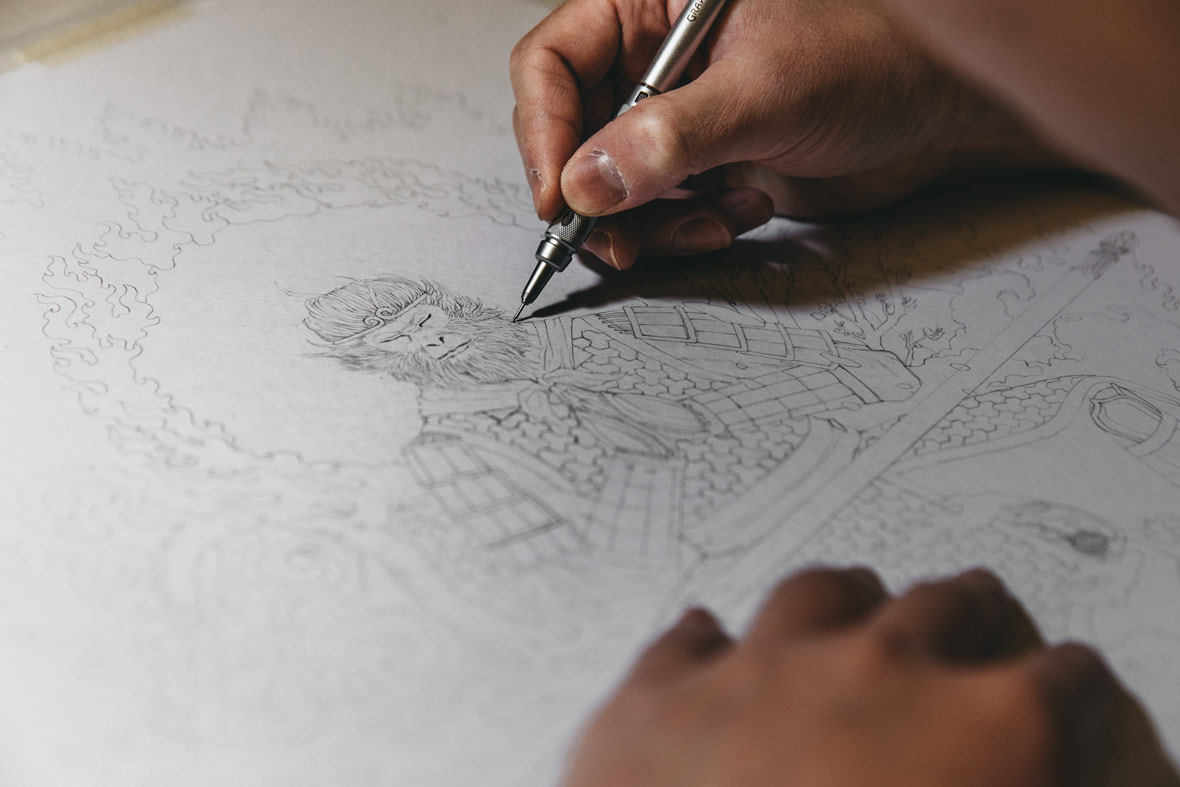
Website: vanzchiang.com
Facebook: ~/VanzChiang
Instagram: @vanzchiang
Contributor & Photographer: David Yen

